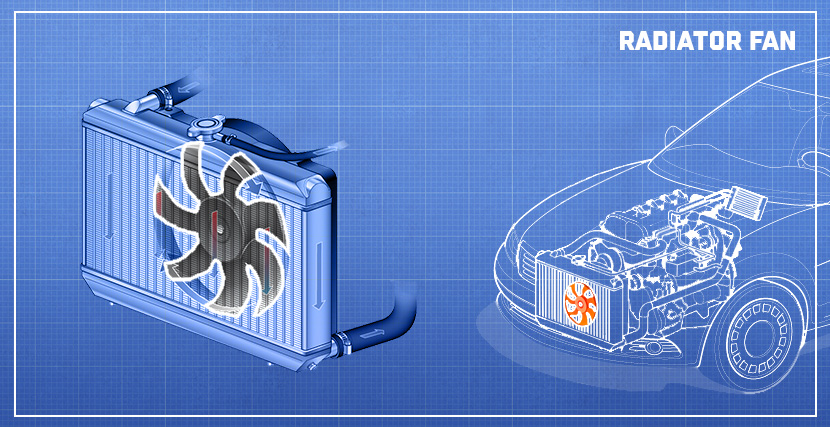Radiator Fan
When a vehicle is running at full throttle, a lot of air passes through the radiator, cooling it down. However, when it’s idling or moving slowly, the airflow reduces, putting the engine at risk of overheating. This is when a radiator fan comes into play. It forces air through the radiator, expediting heat dissipation for better engine cooling.

All radiator fans can be divided into two types: mechanical and electric. Each of them has its pros and cons.
Mechanical fans
The lion’s share of the vehicles produced till 90s as well as some modern trucks are equipped with a mechanical radiator fan. As a rule, this type of radiator fan features a built-in clutch which engages the fan when the engine is getting overheated. The fan is attached to the water pump pulley for ease of use and operation.
Electric fans
An electric fan can be found under the hood of just about any modern vehicle. It is driven by an electric motor and operated by an engine control module or a temperature switch. Mounted in front of a radiator, an electric fan usually serves to cool down both the radiator and air conditioning refrigerant. Depending on a vehicle, there can be one or several radiator fans which are engaged when the engine is getting hotter or running at lower RPMs to prevent possible overheating.
A radiator fan is crucial for safe and smooth engine operation. Its failure to operate may cause a variety of problems:
Overheating
The main job of a radiator fan is to prevent the engine from overheating when the vehicle is idling or moving slowly. If it fails, the engine will get overheated very quickly, especially when running at low RPMs on a hot summer day. In the event your temperature gauge hits the red zone or the warning lights come on, you should shut down the engine and wait until it cools down.
Malfunctioning A/C
In addition to its primary function, a radiator fan in modern vehicles serves to remove heat from an A/C system. A faulty radiator fan will cause the A/C system to blow warm air.
Warning lights blink or illuminate
If the engine overheats, the warning lights and check engine light will come on to alert you of the problem. The A/C button may also blink along with the warning lights.
Can I fix a bad radiator?
The majority of radiator fans are not repairable. If it fails, it should be replaced with a new one. However, in some cases the motor of an electric radiator fan and the clutch of its mechanical counterpart can be serviced and replaced separately. Besides, it is always a good idea to inspect the cooling system for irregularities to find out what caused the failure.